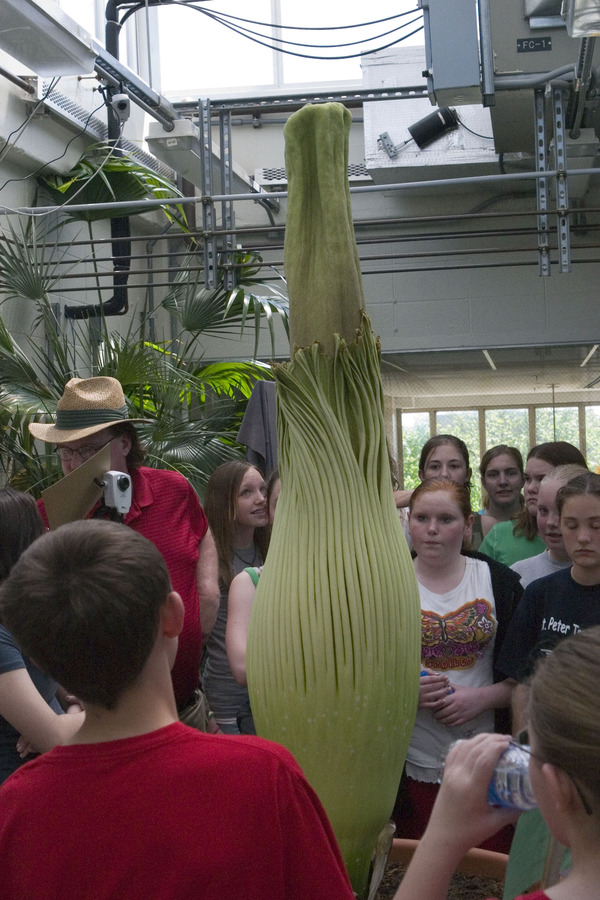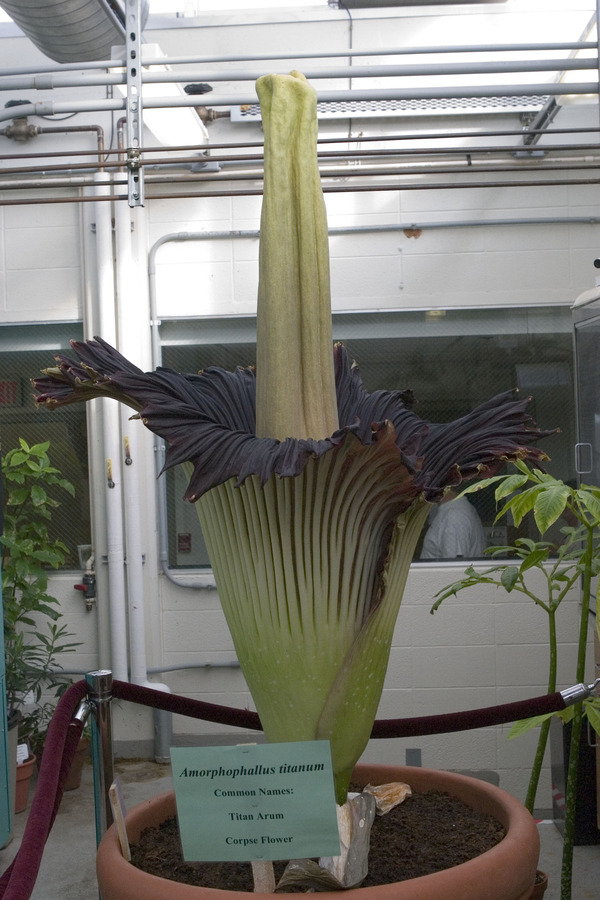

A Titan Arum or Amorphophallus titanum, otherwise known as a Corpse Flower, drew more than 7,000 visitors to the Gustavus Adolphus College Department of Biology’s greenhouse during a four day period.
The plant is now beginning to enter a dormant phase and visiting hours have ended. Those interested can continue to track the plant by visiting the blog and webcam. T-shirts to commemorate the event can be purchased by clicking here.
The Corpse Flower is a rare flowering plant that is only found naturally in the tropical rainforests of Sumatra, Indonesia. The plant at Gustavus is believed to be the first of its kind to bloom in the state of Minnesota. With the largest unbranched inflorescence in the world, the Corpse Flower’s name comes from the repulsive scent it emits during the hours after it blooms. The plant’s cluster of flowers can grow to almost 10 feet tall, although the plant at Gustavus is slightly smaller.
The Corpse Flower came to Gustavus when Associate Professor of Chemistry Brian O’Brien received 20 seeds in 1993 from a San Francisco physician named James Symon. After years of careful cultivation, the plant finally bloomed.
“This plant is one of the wonders of the botanical world,” O’Brien said. “Symon decided to go to Indonesia and collect a large number of seeds and then distribute them to individuals and institutions that would be able to conserve this plant in case it became extinct in the wild.”
Because of the rarity of the plant and the distinctive odor that the plant emits, blooming Corpse Flowers have attracted thousands of visitors at various locations throughout the United States.
Click here for a list of frequently asked questions about the Corpse Flower.
Leave a Reply
You must be logged in to post a comment.